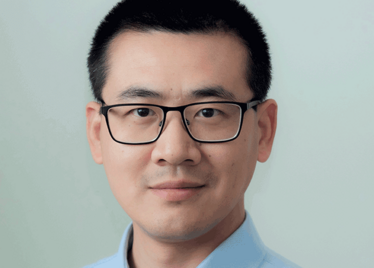From Bread to Blood
How critical anti-cancer drugs can be sustainably developed from genetically engineered baker’s yeast.

A shortfall in the supply of essential anti-cancer drugs vinblastine and vincristine, compounded by the emergence of the COVID-19 pandemic, inspired researchers from the Technical University of Denmark (DTU) to work on a more sustainable alternative. Their answer? Genetically engineered yeast. Here, we speak with Jie Zhang, Senior Researcher at DTU Biosustain, to find out more.
Tell us about your role at DTU Biosustain…
I joined the Novo Nordisk Foundation Center for Biosustainability (Biosustain) at DTU in 2014 as a researcher. My interests focus on applying synthetic biology to make valuable plant products in microbial cell factories. We engineer plant biosynthetic pathways into baker’s yeast (Saccharomyces cerevisiae) to synthesize high value-added plant natural products using yeast fermentation. We are currently working on monoterpene indole alkaloids (MIAs), which are a class of structurally and functionally diverse natural products found in the order Gentianales. So far, there are more than 3,000 MIAs reported, including anti-cancer therapeutics vinblastine and vincristine, among many others.
What’s the story behind the research?
I have always been fascinated by nature and what biology can make, so bioengineering and applying biotechnology to make something useful is very interesting to me. At the Center for Biosustainability, our aim is to develop enabling technologies for the transition to a more sustainable economy with a reduced environmental footprint. In short, we need technologies to replace petroleum-based chemical production and a more sustainable supply chain for plant-based natural products, including therapeutics.
Synthetic biology has demonstrated great potential here; engineered microorganisms, such as S. cerevisiae, can produce complex molecules faster, using fewer natural resources.
We chose to work on the MIA family because of its diverse bioactivity, which points to the opportunity to develop novel therapeutics. These molecules have very complex structures that are too challenging to synthesize chemically, so their supply is exclusively dependent on plant extracts, which results in a slow manufacturing process that can be affected by plant diseases, natural disasters, and so on.
How exactly is yeast used to develop vinblastine?
We had no way of predicting the 2019–2021 shortage. We chose vinblastine as a testbed because, to our knowledge, it is the longest and most complex plant biosynthetic pathway. The whole pathway – which was only completed after the identification of the last two missing enzymes in 2018 – contains 31 enzymatic steps. To tackle the challenge, we divided the whole pathway into three modules based on the commercial availability of precursors and standards. The first module converts the yeast native metabolite geranyl pyrophosphate (GPP) into strictosidine – the common precursor of all natural MIAs. The second module converts strictosidine into catharanthine and tabersonine, and the third module further converts tabersonine into vindoline. Each module was expressed in yeast and tested individually to confirm the functional expression of that portion of the pathway.
We then merged all three modules to construct a strain that produces vindoline and catharanthine from a feedstock of glucose and amino acids. This final strain contains 56 genetic edits, including the over-expression of 34 genes from plants and other sources, as well as deletions, knockdowns (reduction of expression level), and overexpression of ten yeast genes to improve the generation of key precursors in the biosynthetic pathway.
Next, we grew the engineered yeast strain in laboratory-scale bioreactors, and from the fermentation broth we purified vindoline and catharanthine, which were chemically coupled to produce vinblastine.
This project would not have been a success without continuous funding from the Novo Nordisk Foundation, the BioInnovation Institute Foundation, and the European Union’s Horizon 2020 Program.
What other pharmaceutical applications are you exploring?
We can use the yeast strain from the first module, which produces strictosidine, as a platform to produce any of the other 3,000 natural MIAs. One molecule we are working on is the anti-addiction agent ibogaine – a bioactive ingredient from an evergreen African shrub: Tabernanthe iboga.
We will then try to upscale the fermentation process and develop a downstream processing method for purification.
How can researchers and pharmaceutical companies better prepare for future supply chain disruption?
The pharmaceutical industry is extremely complex and its manufacturing processes are highly regulated. I can’t comment on how they can better prepare for future crises caused by raw material shortage or interrupted logistics, but I do think we need to develop alternative processes to manufacture APIs – especially those required for essential medicines. Here, I believe synthetic biology has great potential in terms of establishing a cost-effective and reliable manufacturing process, as well as expanding the chemical space to synthesize many more valuable unnatural products.
Following a Bachelor’s degree in English Literature and a Master’s in Creative Writing, I entered the world of publishing as a proofreader, working my way up to editor. The career so far has taken me to some amazing places, and I’m excited to see where I can go with Texere and The Medicine Maker.



















